The Fantasy Genre has long been dominated by the religions and customs of countries touched on by the Crusades. While this makes sense, with the familiar image of a knight wandering foreign lands being key to the genre itself, there has been stagnation in recent times. As such, I’ve taken it upon myself to look into the cultures of the world and find fascinating details about other mythologies often overlooked by the genre we so love, going on a bit of a tour of world mythologies.
Over the last few months I’ve made it a point to go more into depth about West Africa than I have other parts of the world. I’ve always intended to go back to other parts of the world for more specifics as time goes on, the earlier entries being used as an introduction to things a bit at a time that could then lead into continuing this series indefinitely. And it’s true that there are a lot of variances in other parts of the world that I fully intend to explore. But I felt that, culturally, we owe West Africa a bit more credit than we’ve given it in the past. For a long time the parts of the world that were influenced by European culture have had an impression of what West African culture was like and deemed it to be somewhat inferior more often than not.
So as we reach the last entry for the West African region, I find it appropriate that I end it on the note of a religion most misunderstood from the region. Though we think we know quite a bit about it, the religion we’ve come to know as Vodou has long been represented as some form of dark art with practices that deal with demonic forces. Too often we see the image of the Vodou Witchdoctor who does depraved things to the living and the dead.
But when we look closer, like the rest of the region, it’s easy to see that we got it wrong…
Defining Vodou and Vodun
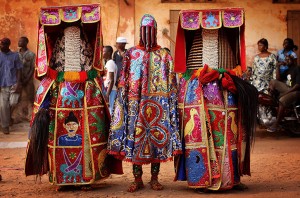
Vodou is the West African religion you are most likely to have heard of in the past. It is often one of the few parts of West African religion we do actually see represented in western fantasy stories because it is a very influential culture among the African Diaspora. But the thing that we often don’t realize is that the “Vodou” we represent isn’t an accurate depiction of the religion. In fact, it isn’t even an accurate depiction of the Haitian Vodou we claim it to be.
Haitian Vodou, which is usually what we’re talking about when we mention “Vodou” rather than the traditional West African “Vodun/Vodoun”, is a syncretic religion that fuses West African cultures with Christianity – particularly Catholicism. The conversion was somewhat simple, given that both Vodun and Catholicism have a system of sanctifying the deceased. And so the saints of Catholicism were easily reconciled with the Vodun spirits to create this new entity.
The thing is, because of this, some aspects of the original Vodun are obscured, confused, or misrepresented after being filtered through so many elements. Like a game of telephone, the details have altered from one person to the next until eventually we got an image like this:
And that game of telephone honestly begins with another culture I covered earlier…
Dahomey
As I said several entries back, the Dahomey religion of the Fon people was related to Vodun and introduced many elements that would go on to influence Vodou in the diaspora. The Dahomey religion is often known as Dahomean Vodou and the two religions have a lot in common at first glance. In both religions there is an animist belief that all things have a spirit and these spirits include entities of great power which could be considered lesser gods. In fact, of these gods, many spirits in Dahomey and Vodun share names, such as Mawu and Lisa from the Dahomey creation myth who represent the sun and the moon and are responsible for the creation of the world.
But where Vodun and Dahomey part ways is emphasis. Vodun has very little focus on the creation of the world and the creator responsible for it. In fact, in the Vodun religion it’s considered an unknowable that couldn’t be understood by mortal minds. The Vodun creator god, though existent, is rarely focused on or even named – though they are often named in various forms of Vodou because of the Dahomey influences. Rather than focus on these things that the Vodun religion believes are unknowable, they focus on things closer to home through ancestor worship and communing with lesser deities.
With the help of the rituals of the Vodun priests, the Vodunon, and priestesses, the Vodunsi, the believers of Vodun commune with their ancestors and lesser spirits to act as intermediaries with greater spirits. These spirits, btw, are known as Vodun, a word which means simply “spirit” and the word that names this religion and all others that follow it.
There are Vodun which share names between Dahomey and Vodun faiths such as Mawu and Lisa. But these spirits are often slightly different. For instance, while Mawu and Lisa in Dahomey are often fused into a single entity known as Mawu-Lisa, who is responsible for creation of the world, the Vodun see them simply as children of the creator, two of seven. These children were each given domain over a specific part of the world, much like the Greek Pantheon in Europe. One of these entities that is particularly important is…
Legba
In some traditions, Legba takes the place of Lisa in the pair of the sun and the moon, becoming Mawu’s masculine counterpart and filling the role that Lisa would normally. Represented as a great Vodun who happens to be a child of the creator, Legba’s key role is one that is indispensable to the Vodun faith. For, while all Vodun have a specific domain which they are the master of, Legba is the the Vodun responsible for the human communication and is the one that facilitates the communication of humans to the ancestor spirits and other entities throughout the cosmos.
Legba is said to be able to speak all languages and is the translator of sorts for humanity to be able to speak to the world beyond. In this role, much like Eshu-Eleggua from the Yoruba faith, Legba is invoked at the beginning and end of all ceremonies so that he can be asked for permission to speak to the spirits. Upon receiving this permission, he is the one who operates the doors (once again, like Eleggua).
As a figure, Legba can come in distinct forms depending on which variation of Vodou or Vodun you are dealing with. Traditionally, Legba is an old, wise man, one of the oldest spirits in the cosmos who walks with a cane or a crutch and smokes a pipe. He’s often represented by canes, keys for opening doors, and his sacred animal the dog. In this form, as part of the Haitian Vodou, he’s syncretized with various saints, including Saint Peter, the disciple of Jesus who is often credited for founding of the Catholic Church. In this role, he is seen by the Haitians as being the one who provided ultimate understanding, showing them the path to following Jesus.
However, a differing view of the figure in Benin and Togo is that Legba can be a virile young man, more like Eshu-Eleggua in being a strong and proud figure rather than showing his ancient age. In this form his shrines are found at the gates to every village, continuing his role as the keeper of the doors and the one you must ask for permission for passage into other places. However, while in this form he is considerably a different figure than the one seen elsewhere – as he often bears horns and an erect penis.
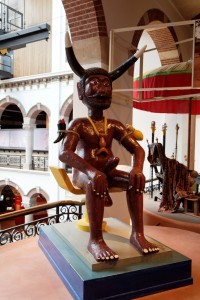
But regardless of what form, Legba is the one who will grant you an audience with the spiritual world, so you can commune with…
The Vodun/Loa
In the Haitian Vodou, greater spirits are known as Loa and they are in command of aspects of our world. These spirits are not here to serve us, but rather are to be served and appeased to draw their favor. These spirits include the aforementioned Legba, Mawu, and Lisa, but also many others mentioned in earlier posts such as Mami Wata.
In these traditions, there are several kinds of Loa divided by origin. The Rada Loa are the old world Loa like Legba who are ancient and among the first to exist. They tend to be beneficial and protective of humanity, tied to the homeland. Meanwhile the Kongo and Nago Loa are tied to neighboring lands, more fierce and militant than the Rada Loa, though not as fiery as the Loa of the new world.
It’s in the new world that you find the Petro Loa, spirits tied particularly to the domain of Haiti. Petro Loa of the new world are born from the harsh environment of slavery. They’re invoked through whip-cracks and burning gunpowder. Often these are harsher spirits, more fiery and prone to anger than the more benevolent spirits of the homeland. Some Kongo and Nago Loa known to be warriors or particularly known for their fierce nature migrated to become Petro Loa, such as Marinette, a fierce female Loa, cruel and known to burn people when she possesses them. Each of these family of Loa has a personality which ties to the land they’re from, rooted in the culture that created them. As such, the Petro Loa tend to be spirits of pain, anguish, and torment.
But if you were to go to West Africa they wouldn’t know them as Loa. There, all spirits are known as Vodun and they’re pretty much everywhere. The followers of Vodun believe that all things have a spirit and that anything with a spirit is touched by the divine. As such, all spiritual things that need to be done can be done with seemingly ordinary objects. Small totems called fetishes can heal a person because they are filled with a Vodun which is, itself, divine in nature. The same is said of herbalism, amulets, and any number of objects in the world which can be seen as positive influences due to the presence of Vodun within them. In the original West African religion, there is no real harm brought upon people by the Vodun.
But then, that raises the question… where did Haitian Vodou get the idea of…
Bokor
In Haitian Vodou, a common story is the idea of a priest who can cast curses and spells on the living and the dead. The Bokor is an image that has actually overtaken most of Vodou in western culture – to the point that the Bokor itself is actually one of the first things you would be likely to think of when you think of Vodou. But as I said before, the Vodun aren’t particularly aggressive towards humans (until the new world) and things which possess a Vodun are usually divine in nature and beneficial to humans. In fact, the practice of casting spells or curses on a person is absent from Vodun and their priests.
But that’s not true for “Bò”, an occult practice that runs in opposition to Vodun. In Bò, the priests known as Bòkônon use fetishes and amulets to cast spells on people – the practice we often associate with Vodou instead. These objects for casting the spell were known in Yorubaland as “Juju” (which is the origin of the phrase “bad juju” here in the west). These priests were known to be counteractive to the Vodun priests who were more associated with trying to heal people through herbalism and prayer rather than spells.
As these cultures came to the new world, the figure of the Bòkônon was slowly blended into the culture until it became the figure of the Bokor, a priest who “serves the Loa with both hands”. The Bokor are essentially able to do both light and dark magic, serving the Loa and calling on their power to impact the land of the living. Through the Bokor we have the origins of myths such as Zombies and Vodou dolls which allow the Bokor to use spirits to torture the living and the dead, particularly those who believed their soul could never rest without being able to return to the homeland.
Because of this, we’ve committed a bit of a disservice to the idea of Vodou and, by relation, most of West African culture. As Vodun transformed into Vodou with syncretion, the Bòkônon became the Bokor in the same way. And, as with most Christian faiths, any magic that could be considered withcraft immediately became something to be feared. Essentially, while their culture transformed in the new world, Vodou created new spirits, Loa, to fear, and new people, Bokor…
That could bring their magic to bear on mankind.
(I write novels and sometimes fun tweets. I’m happy that I took this time to look into the culture of West Africa and I’m looking forward to move on to another region. I hope this series wasn’t too shallow, I tried my best, but I’ll be happy to go into more depth again in the future. For now, I think this is a good place to leave on.)


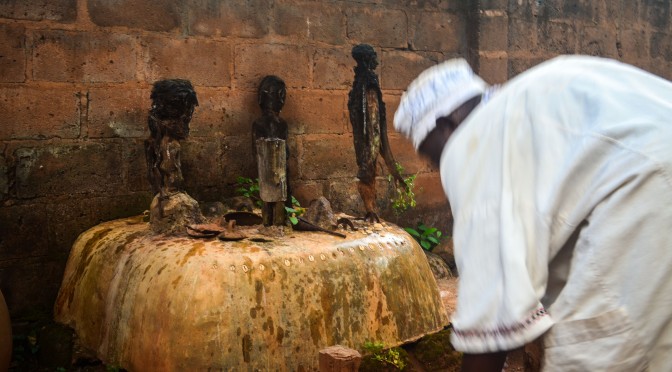

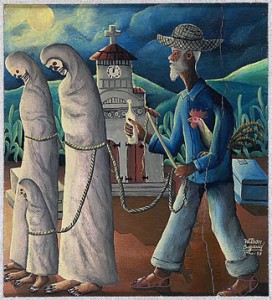

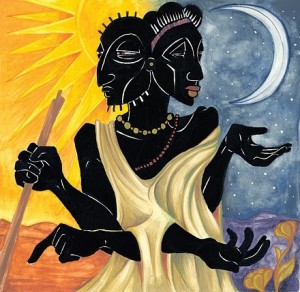
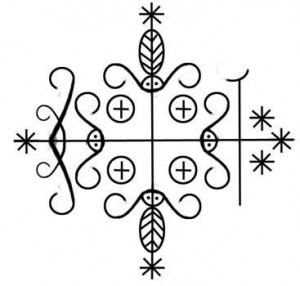
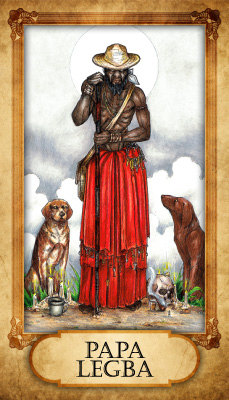
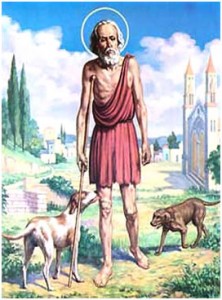
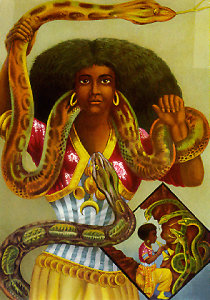
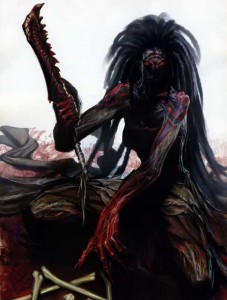
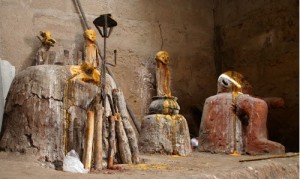
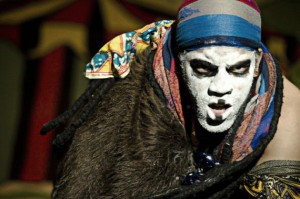

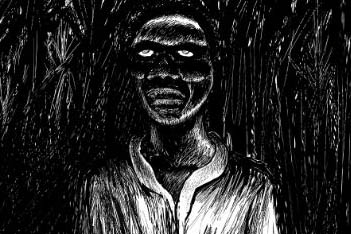





Brilliant read, answered some questions I had about this.
I think when the new world was amalgamed into the original, new loa would have been found, based on the difference in tool construction and talisman creation. Metal swords would have an angrier spirit based on the forging process than a stone spear, for example.
And having a group created to liaise with these new loa, the bokor, would have had altered techniques and practices to deal with angrier spirits.